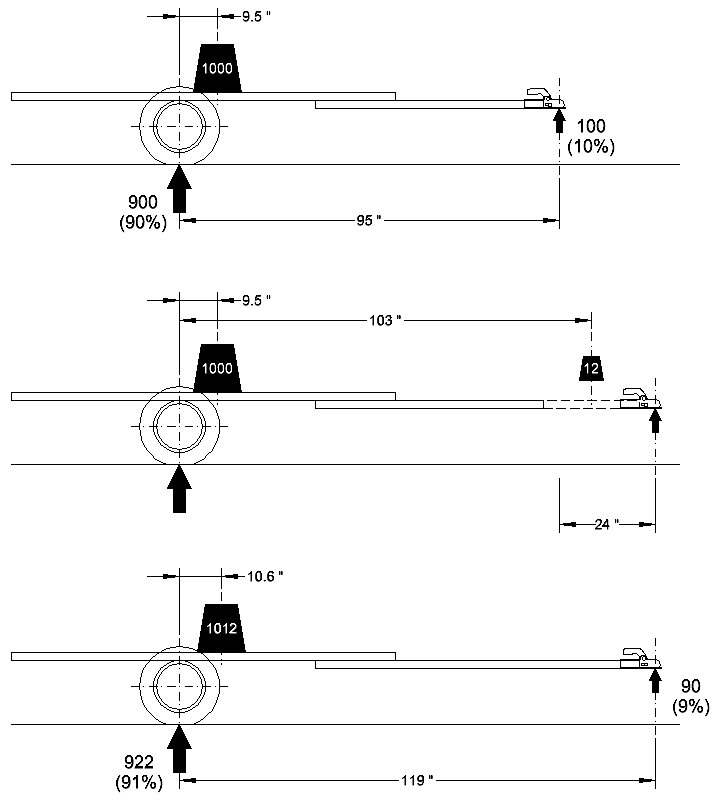Sorry for the late reply - busy week, plus I had to draw the graphic below!
I should stress first that there are two different things here - where the centre of gravity is and what effect it has on trailer stability. The position of the centre of gravity is basic physics and isn't open to question (though maybe it is, over 99% of the speed of light....). On the other hand, what affects trailer stability is not a precise science so there's still plenty of 'black art' there.
This example shows what happens if you lengthen the tongue. The top case is the trailer beforehand - it weights 1000 lb with 10% of that weight on the hitch, and is about the length of a HF 4x8.
When adding 24" to the tongue in the middle graphic, I've assumed the heaviest 2"x2" tube I can find and 24" of that weighs 12 lb. It's basic maths to combine that into the (unchanged) rest of the trailer to give a new 1012 lb trailer in the bottom graphic.

The result? The extra tongue weight moves the centre of gravity of the whole trailer forward of the wheels by 1.1". However the longer tongue means that the hitch is now carrying
less weight than it was before.
I don't doubt that this longer trailer may tow better than it did before, despite the hitch weight changing in the wrong direction - which illustrates that trailer stability is not a simple question of hitch weight percentage, as many people seem to think.
StandUpGuy wrote:I am guessing the heavy weight of the porcelean toilet positioned at the absolute back has a lot of momentum on that side of the sea-saw. Obviously the toilet is stationary so is it fair enough just to load enough weight forward on the other side of the seesaw plus the extra 10-15%? I am at 142lbs tongue weight but am not sure yet of total trailer weight. My guess is about 1,000 lbs.
Now this is bad news. The worst thing for trailer stability is to have big weights at the ends - simply balancing a heavy weight in the rear with another heavy weight at the front may give a hitch weight that meets the usual recommendation, but it still makes for an unstable trailer.
What you describe as momentum is exactly right - it is actually the moment of inertia, best illustrated by the drum majorette's baton - once that starts twirling, it is not easily stopped and it's exactly the same with trailers.
A substantial increase in hitch weight may solve this stability problem, though that's not guaranteed and you may need to check if the tow vehicle hitch/receiver can take a big increase. Moving the axle is likely to be only way to make that big a change. The alternative is to remove some of the weight that's causing the problem - like giving up that porcelain toilet.
Let's say again the trailer balance mantra - heavy weights must be positioned near, or right over, the axle(s).


